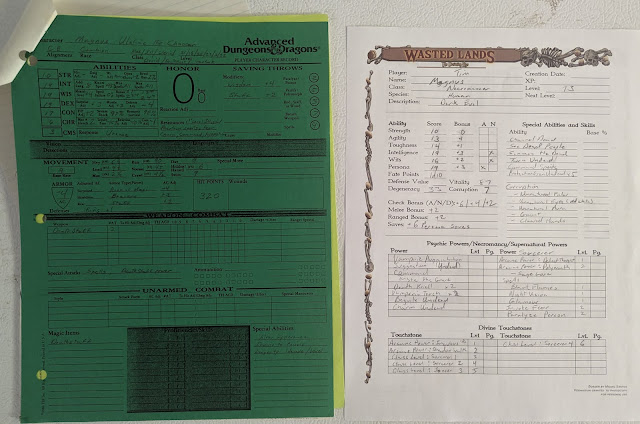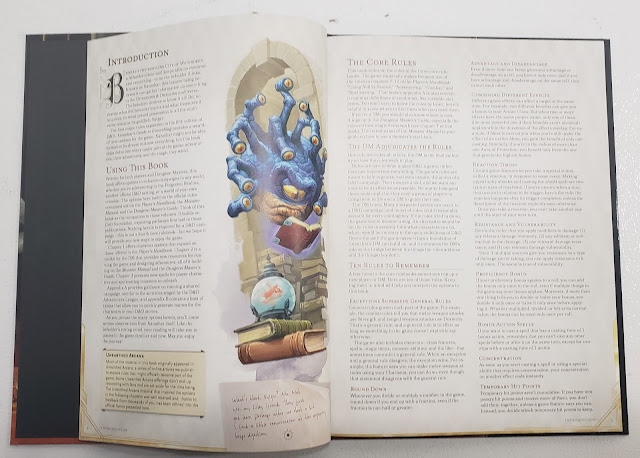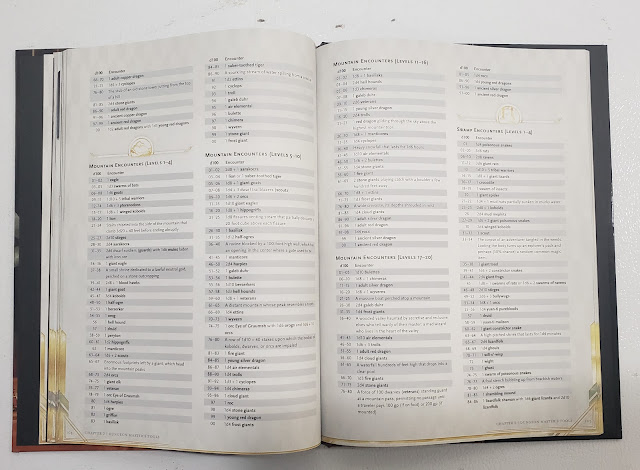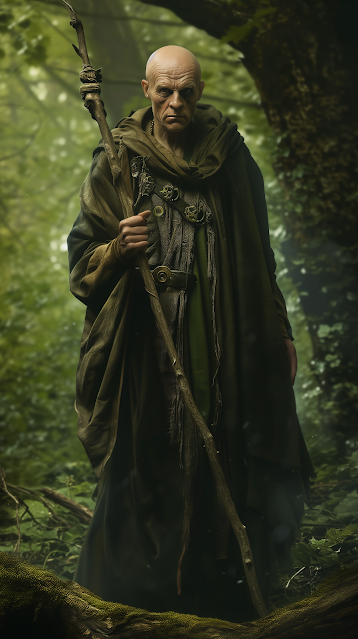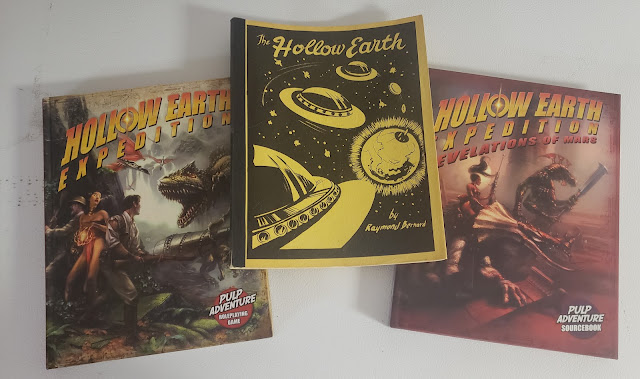In the "Anything worth doing is worth doing in excess" category: Some fluff for the D&D game.
There is a growing cult found among the elves of the world. Whispered in ears and it’s writings forbidden it is yet still gaining strong standing among elves, surface and drow alike, a simple, but heretical belief.
Lolth was betrayed.
The members of the Church of Lolth Ascendant firmly believe that Lolth, the Demon Queen of Spiders and Goddess of the Drow was in fact Araushnee, the Elven Goddess of Fate and Destiny. This is not in dispute. What is disputed however, are the events that lead Araushnee to become Lolth and what happened after.
Araushnee was born the same time as all the Elven Gods in the time just After Dawn. She was the most beautiful of all the Seldarine, her ebon skin glistened in the moonlight and looked like carved wood in the sun. Corellon said she was made out of piece of pure midnight and her hair reflected the light of the stars above. For this he gave her domain over the stars and secrets they keep. They say that the other Gods were jealous of her, but she did not see this, for Araushnee was born with the Sight. She could see the complicated strands of fate, understand the webs they could weave and make predictions.
It was these predictions that lead to her downfall.
Araushnee predicted that the peace of the elves would end in violent wars where elf battled “fearsome beasts” (orcs were not yet created), dwarfs and other elves. She was laughed at, but she knew her predictions were true. When the orcs were created and threatened elf territories the others still did not listen to her.
She saw the future Elf/Orc war and tried to warn Corellon. But he ignored her advice and was too busy dallying with the three goddess Sehanine Moonbow, Hanali Celanil and Aerdrie Faenya.
When the elves finally did respond Araushnee had another vision. She saw Corellon defeat Grummush and destroy the all of the orcs. But genocide was not enough for the victorious and bloodthirsty god. He attacked the dwarves and destroyed them, and then the gnomes, Halflings and finally humans. Araushnee saw a world in which only the Elves would remain and Corellon ruled all as a bloody tyrant. Arushnee loved Corellon, giving him two children, but did not want him to become a monster. She knew she had to stop him.
She turned to Sehanine Moonbow, the Goddess of Artisans, who she felt was a sister (despite her infidelity with her husband), to ask her for guidance. But Sehanine was jealous of Araushnee and her dominion of the night sky and of her place at Corellon’s side. She told Araushnee that the only way to protect the elves was to let the orcs know of their surprise raid. Araushnee agreed and left alone for Grummush’s lair. Sheanine remained behind in Arushnee’s home to wait out the battle.
Araushnee went to Grummush and told him of the surprise attack to happen and the strength of the elven forces. He commanded that she remain with him, she said no that it was her fate to die in the battle in the elvish fortress. This she had seen.
Araushnee returned saddened, but knowing that she had prevented Corellon from becoming an even greater monster than Grummush. She stood in readiness for battle with her kin and her children. She did not even notice that Sehanine was not with them. When the battle began the elvish forces were nearly overwhelmed. While they did fight the orcs back and achieve a victory, it was not the slaughter that Corellon was wanting. Orcs still lived, Grummush, wounded, still lived. Corellon raged, demanding to know who had betrayed them. Araushnee said nothing, still in shock over not dying in battle and wondering if her visions had been wrong. Then Sehanine returned, claiming she had been imprisoned by Araushnee, that she had discovered the Drow Queen’s plans to warn and join with Grummush.
Corellon confronted her asking if these claims were true. She admitted to telling Grummush, and that is all Corellon had heard. He went to strike her down but their son Vhaeraun stood in between them. Corellon struck him down instead. Now Araushnee grew enraged. She had sacrificed everything so that the elves could live and Corellon would remain a just ruler, but she was still the mother of this boy and no one, not even the First of the Seldarine, dared touch him in anger. Using all her own power she attacked her former lover. She knew his every move and was able to counteract his every attack and land her own instead. She would have succeeded in killing him had it not been for the lesser goddesses Sehanine Moonbow, Hanali Celanil and Aerdrie Faenya combining their power into one deity to defeat her.
With Araushnee defeated, broken and beyond everything else, despairing over the path Fate had lead her down. Corellon angered, cursed her, her form and her name. Cast her into the Abyss with her son and condemned all drow. He gave her powers to Sehanine Moonbow. He also cast out Eilistraee even though she had stood with her father.
Lolth, as she was now known, hid herself deep in the Abyss and wept.
The Worshippers of Araushnee
The lay worshipper of Araushnee is typically elven, though her voice finds an ear among half-elves and some humans. Her flock is typically younger than other new cults. It is believed that this is due to the fact that drow, once a feared nearly mythical boogeyman 20 years ago, are now more common of a sight. Even good Drow have been known to exist.
Tenants of Faith
Araushnee, now known as Lolth, was a member of the Elvish pantheon.
• She was unjustly banished and imprisoned in the Abyss.
• She wished for nothing more than to be reunited with her fellow elves. She forgives Corellon and even the goddesses Sehanine Moonbow, Hanali Celanil and Aerdrie Faenya. She wants them to welcome her back.
• The Drow are evil, but their evil is one that began with a lie and has been perpetuated by the Drow matriarchy.
• To achieve Arushnee’s reunification with the Seldarine, elven worshipers must achieve reunification with the Drow.
• Evils done in Lolth’s name are often the work of the evil Drow matriarchy, other demons, or even the Seldraine themselves.
Fourth Edition D&D
Araushnee
Lady of Fate, Banished Goddess, Queen of the Demonweb Pits
Unaligned Greater Goddess
Auaushnee, known to the world as Lolth, sits alone in the Demonweb Pits, the prison constructed for her by her former husband Corellon. She presides over Drow and spiders that mimic her ability to weave the stands of fate. Araushnee never answer summons, but communicates to her true followers in prophetic dreams and omens.
Araushnee does not make many demands on her worshippers, feeling that life is demanding enough. But she does hold all her worshipers to the following:
• Find your own fate and follow it.
• Honor Arsushnee not in words, but in deeds and actions.
• Seek to reunite that which has been sundered.
Worshipers: Drow, Dark and Star Pact Warlocks, Fortune Tellers, Diviners
New Feat: Web of Fate [Divinity]
Prerequisites: Channel Divinity class feature, must worship Araushnee (not Lolth).
Benefit: You can use the power of your deity to use web of fate.
Channel Divinity: Web of Fate Feat Power
The strands of fate play out before you like the silken threads of a spider. You may pluck a strand, altering fate in your favor.
Immediate Interrupt Close burst 10
Trigger: An ally in burst makes an attack roll or skill check
Target: One ally in burst
Effect: The target immediately rerolls the attack roll or skill check he or she just made, but must keep the second result, even if it is worse.
Special: You must take the Web of Fate feat to use this power.
Third Edition D&D
Araushnee
Lady of Fate, Banished Goddess, Queen of the Demonweb Pits
Intermediate Deity
Symbol: A spider web or a drow woman holding a distaff
Home Plane: Demonweb Pits
Alignment: Chaotic Neutral
Portfolio: Drow, Fate, Chaos, Night, Stars
Worshipers: Drow, the oppressed, fortune tellers, those that seek redemption, witches
Cleric Alignment: CG, CN, CE
Domains: Fate*, Drow, Chaos, Darkness
Favored Weapon: Distaff (staff)
*Found in Complete Warrior
As the former Lady of Fate, Araushhnee was also responsible for the management of the Weave for elves. It is because of her weaving strands of the Weave into the fate of all elves. This is why Elves are the most magical race and it is something that all elves to this day still feel.
Avatars
Araushnee rarely sends avatars to consult with worshipers preferring to communicate via prophetic dreams and omens. She does this since she feels as living creatures her worshippers need to choose their own fates.
Dogma
Araushnee’s followers are guided to find their own fates and follow it. There will be signs for those that can read them and these signs will guide you. In the spirit of reunification the followers are encouraged to make whole things that have been broken apart. A typical tactic is a group of pilgrims from one elven community to another will ask for odd jobs to do fixing things. While the male members will work, the females will stay with the others to speak of another who wishes to mend. Fortune tellers and others that deal with reading the fates for a price also work in the Word for Araushnee.
Clergy and Temples
The Clergy of Araushnee tend to be young, spirited and have an absolute sense that what they are saying is in fact correct. They will often quote passages out of the Elven canon describing Araushnee’s betrayal and even produce so called “lost works” of Elven scholars that have been deemed to heretical for inclusion. While such works are in fact quite old what is lost to time is whether they were not included because they were heretical, or simply not true. Where they are open the Cult of Araushnee will preach their message of reunification with their Drow cousins and speak of “mending old wounds” both among the elves and among their gods. They firmly believe that if they can get enough worshippers the Seladrine will have to allow Araushnee’s return.
The lay worshipper of Araushnee is typically elven, though her voice finds an ear among half-elves and some humans. Her flock is typically younger than other new cults. It is believed that this is due to the fact that drow, once a feared nearly mythical boogeyman 20 years ago, are now more common of a sight. Even good Drow have been known to exist.
Temples are usually temporary affairs since the cult is tolerated at best and hunted at worse. A typical worship center for the Cult of Araushnee is outdoors in a woodland area (for elven sensibility) and usually at night (out of respect of the Goddess they revere). It is considered a good omen if there are spider webs found in a potential spot and a great omen if spiders spin their webs during the worship service. A sign that Araushnee is pleased.
Second Edition AD&D
Araushnee
Intermediate Power of the Abyss
CN
PORTFOLIO: Fate, darkness, chaos, spiders, the drow race
ALIASES: Lolth, Lloth (Menzoberranzan and Uluitur), Megwandir, Moander, Zinzerena
DOMAIN NAME: 66th level/Lolth's Web (the Demonweb Pits)
SUPERIOR: None
ALLIES: None
FOES: Deep Duerra, Eilistraee, Ghaunadaur, Gruumsh, Ibrandul (dead), Kiaransaleen, Laduguer, Moander (dead), the Seldarine, Vhaeraun, Blibdoolpoolp, the Blood Queen, Diinkarazan, Diirinka, Great Mother, Gzemnid, Ilsensine, Ilxendren, Laogzed, Maanzecorian (dead), Psilofyr
SYMBOL: Female drow holding a distaff or a spider’s web
WOR. ALIGN.: N, CG, CN, CE
Specialty Priests
Fate Spinners
REQUIREMENTS: Wisdom 13
PRIME REQ.: Wisdom
ALIGNMENT: CG, CN, CE, N
WEAPONS: Any
ARMOR: Any
MAJOR SPHERES: All, astral, animal, chaos, combat, divination, guardian, healing, protection, summoning, sun (reversed only)
MINOR SPHERES: Charm, creation, wards
MAGICAL ITEMS: As clerics
REQ. PROFS: Etiquette, weaving
BONUS PROFS: Animal training (spiders), spellcraft
• Fate Spinners are allowed to and encouraged to multiclass.
• Fate Spinners are immune to all spider venoms.
• Fate Spinners can communicate with spiders of all kinds, and spiders never harm them in any way.
• At 2nd level, Fate Spinners can cast spider climb (as the 1st-level wizard spell) or spidereyes (as the Ist-level wizard spell found in Wizard's Spell Compendium, Volume 3 or the Ist-level priest spell in The Drow of the Underdark) once per day. If spider climb is cast, it does not prevent spell-casting so long as two limbs grip the surface being climbed, and light objects do not stick to the priest's hands and feet. Spidereyes allows the caster to see through the eyes of a single normal or giant arachnid within 60
yards, but it does not grant any control over the arachnid's movements or direction of gaze.
• At 5th level, Fate Spinners can cast dispel magic (as the 3rd-level priest spell) or web (as the 2nd-level wizard spell) twice per day.
• At 7th level, Fate Spinners can cast summon shadow (as the 5thlevel wizard spell) or spider summoning (as the 5th-level priest spell) twice per day.
• At 10th level, Fate Spinners can cast true seeing (as the 5th-level priest spell, but with twice the normal duration) or spiderform (as the 5th-level priest spell) twice per day.
• At 13th level, fate spinners can cast dream (as the 5th-level wizard spell) once per day.
Fate Spinners are allowed the same spells as are the Arachne if they are drow.
Araushnee in the Campaign
Forgotten Realms
Araushnee has the strongest presence in the Forgotten Realms world of Toril. Her cult, while not wide spread, does have some concentration in the more urban centers of the world where ideas can easily be shared and of course high among the elves. In particular the cult has gained a foothold among the students of the University in Silverymoon and on the streets of Waterdeep. In Silverymoon more humans are found among the cult’s members than anywhere else, though elves still outnumber the human cultists. In Waterdeep, Araushnee’s message is whispered from trader to trader and in the shops and in the fortune tellers’ stalls. A small temple(in truth a small shop) is maintained in the Field Ward. The Temple is in good standing with the city having paid all their dues and strictly adhering to all the laws. So despite complaints the city officials have no cause to throw them out.
It is from these two strongholds of faith that the cult has spread. Recently the cult has been spotted in Baldur’s Gate as Elven travelers have left other parts of the world to come here.
Greyhawk
With little surprise the stronghold of faith for the worship of Araushnee lies in the City of Greyhawk itself. Once felt to be a minor esoteric cult grown out of the idle speculation of University students the cult has spread to many lands where there are elves. There are however more Drow in the Araushnee cult on Oerth than on Toril. Why this might be is unknown, but plannular scholars suspect it might be due to the lesser presence of other good-aligned Drow gods such as Eilistraee on Oerth.
Due to city laws there are no standing temples to Araushnee in the city and the members of the Oligarchy have spoken out about it.
Arushnee’s cult has taken longer to establish here than in other worlds since the events of the Temple of Elemental Evil are still within living memory.
D20 Modern – (Urban Arcana, Shadow Chasers, Dark*Matter)
The worship of Araushnee is open and widespread. Considered to be a neo-Pagan Goddess that has been “re-discovered” she is celebrated as a symbol of triumph (in particular female triumph) over adversity (in particular male adversity). She is revered both by humans and elves alike. Her popularity has grown since she was used as the “spokesperson” for the phenomenally successful “Lolth Fair – A Celebration of Women in Music” event of the previous decade.
Drow in power are less likely to follow Araushnee than those living in the streets or slums of the modern world. Though she has also found solid ground with the various feminist movements among the elves, they differ is feeling Araushnee should not have beg for forgiveness, but rather it is the other elven gods that should be asking for hers.
Witches of Arashnee
Given her status as a “rejected” or “outsider” goddess, the priesthoods of Araushnee could best be described as witches in the classical sense. They worship a god felt to be evil by all of those around. They could also be described as witches in the modern sense, worshipers of downtrodden and most misunderstood goddess.
1st and 2nd Edition, Complete Netbook of Witches
My suggestion of course would be to use my own “Complete Netbook of Witches and Warlocks”. It is a free netbook that is all over the internet now. Just Google it.
Witches of Arashnee are of an Eclectic or Faerie Tradition. Typically they will belong to a small coven of eight or less, eight being the primary number of significance for Arashnee’s cult.
The Gypsy Elves in this book are also among her worshipers and are one of the primary means for the spread of her cult.
Arashnee’s Witches have the following Occult Powers:
Lesser: Brew Truth Drug
Minor: Acquire Familiar (Spiders and Arachnids only)
Medial: Immune to Supernatural Fear
Greater: Fascination
Superior: Foretell Future
3rd Edition, Liber Mysterium, the Complete Book of Witches and Warlocks
While there are a number of d20 compatible witches on the market, I also suggest using my “Liber Mysterium” book on witches. Again, it is free and can be found with a Google search, most likely that same search that works above.
Witches of Arashnee are of an Eclectic or Faerie Tradition. Typically they will belong to a small coven of eight or less, eight being the primary number of significance for Arashnee’s cult.
Typically the Witches of Arashnee hail from Eclectic or Faerie (Kuruni) traditions, with most witches being human and elf respectively.
They have the following Occult Powers
Minor (7th Level): Fate’s Luck
Medial (13th Level): Dream, as per the 5th level Wizard spell.
Greater (19th Level): Foretell Future
Links
A cool blog post I found about Lolth and Ereshkigal, h
ttp://dovearrow.wordpress.com/2008/02/10/the-descent-of-lolth-and-the-goddess-ereshkigal/
That Wikipedia thingy,
http://en.wikipedia.org/wiki/Lolth
Forgotten Realms wiki,
http://forgottenrealms.wikia.com/wiki/Lolth
Yet Another Fantasy Gamer Comic,
Lolth is a semi-regular,
http://yafgc.shipsinker.com/

